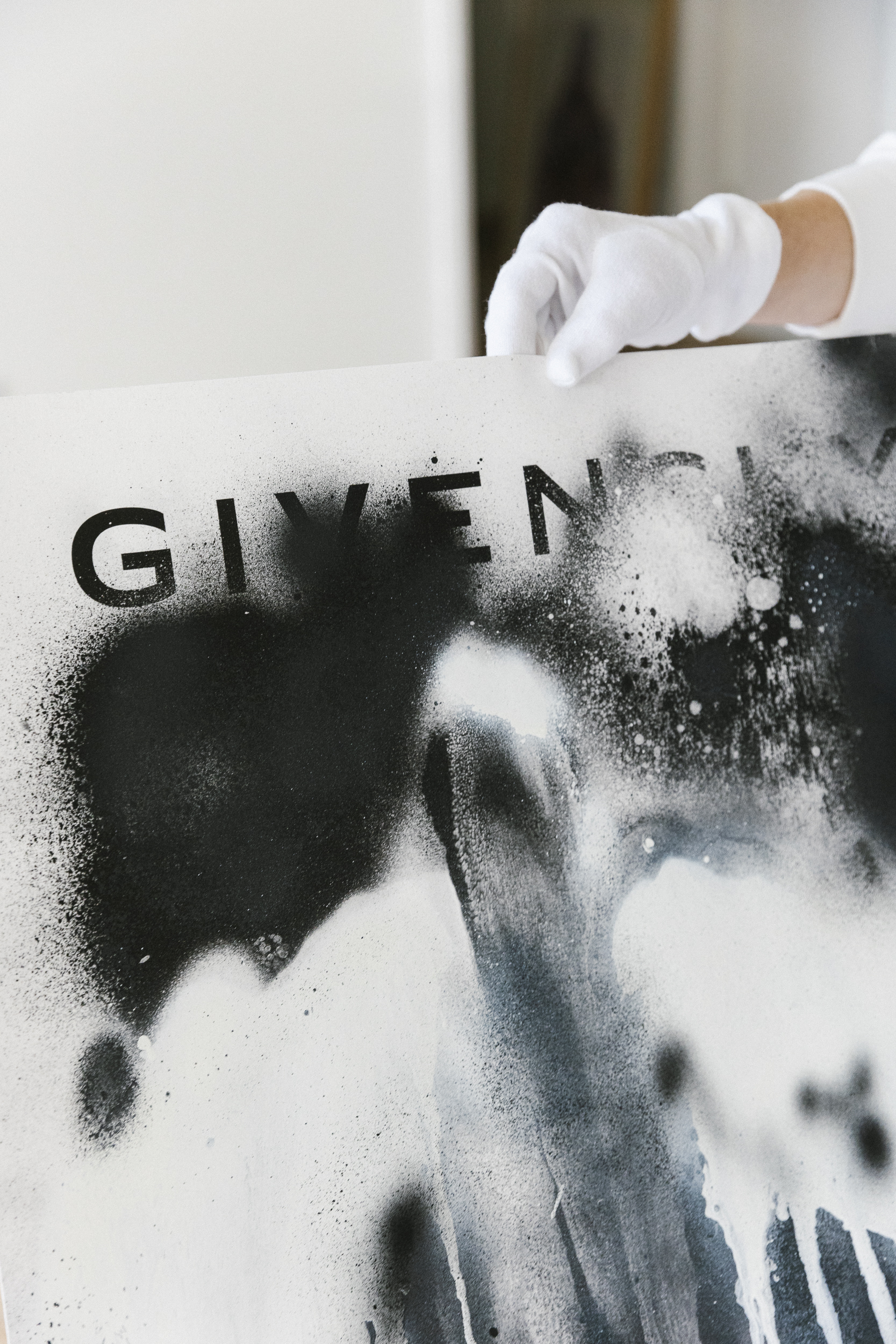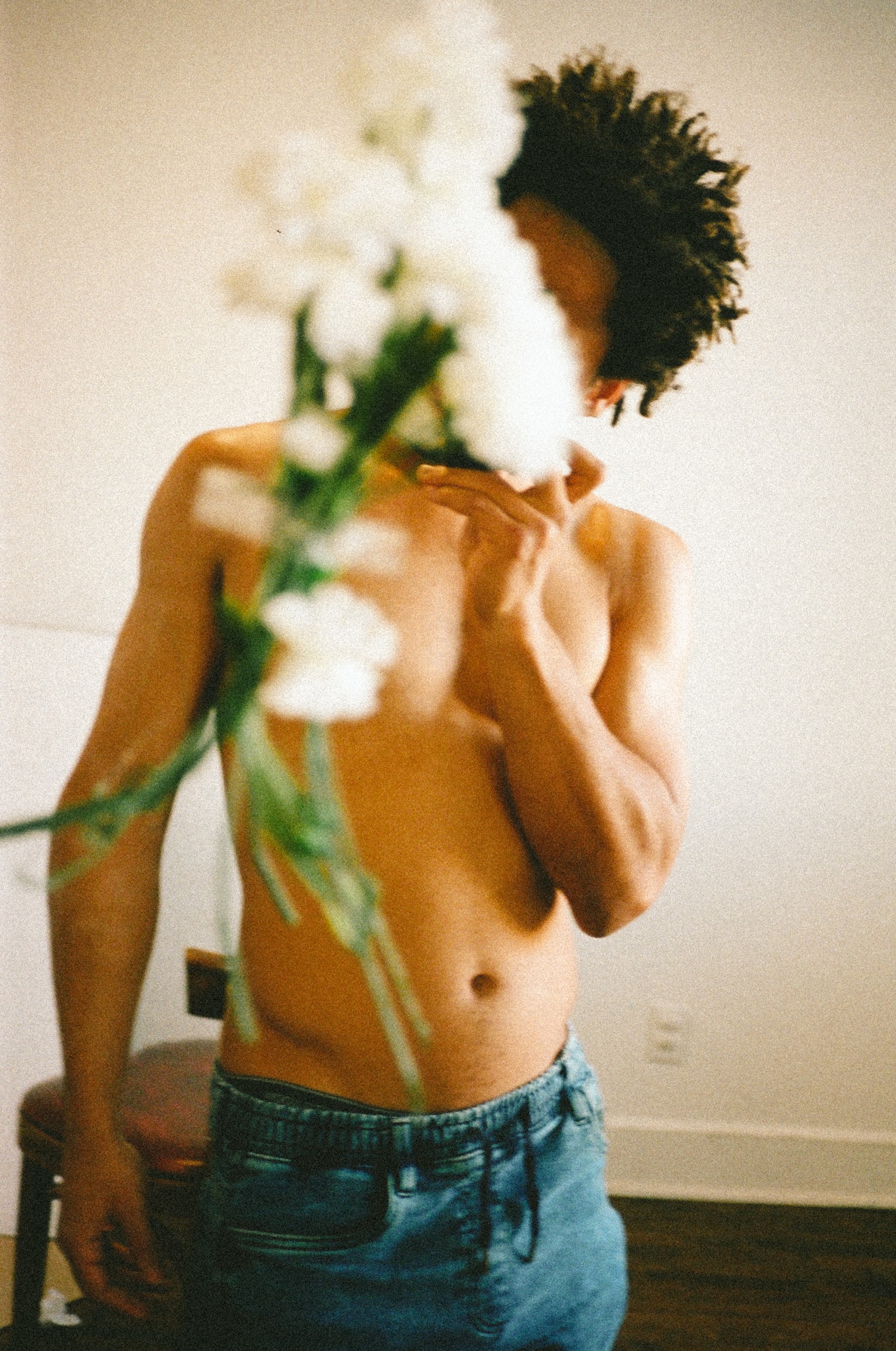Read Time 6 minutes
Historical Heroines: Frida Kahlo & living radically
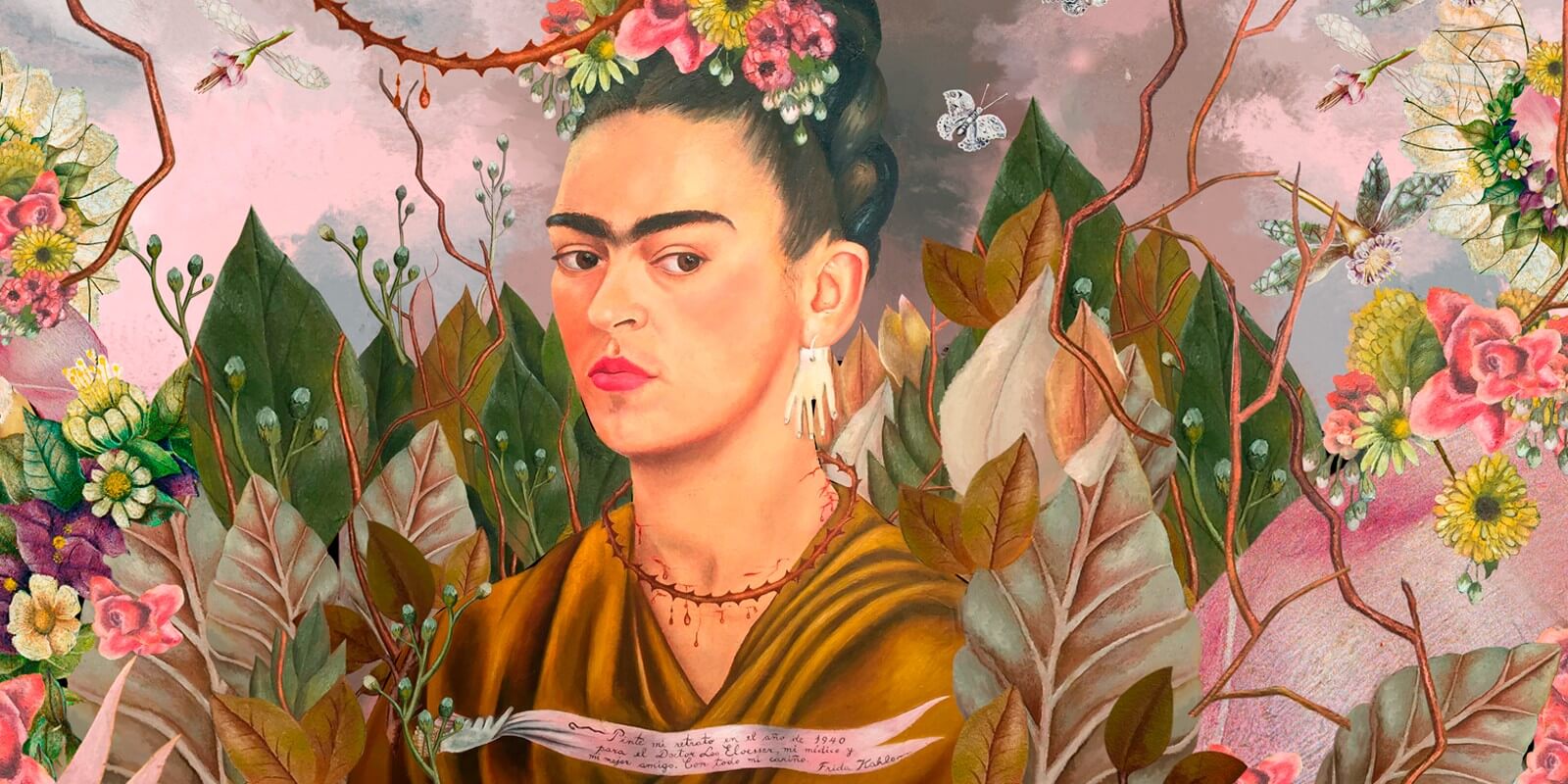
There are two reasons why Frida Kahlo [1907-1954] is so beloved by teenage girls, why they buy bags and mugs and notebooks and other incongruous merchandise with her image emblazoned upon it. The first is that she was a master of accessorising, and the second is that she suffered, and there is no more delicious a cocktail for a teenager than beauty and pain.
André Breton called Frida ;a bomb with a ribbon tied around it’, decorative but explosive. Frida Kahlo’s pain was chronic, caused by a bus accident in 1925 where she was impaled by a metal handrail which entered her body on the right side and exited through the vagina. This accident was the pivotal moment in her life; her painting, her lifelong poor health, her essential lore. Everything was born on this day.
A bomb with a ribbon tied around it
She suffered not only physically, at the hands of her body, but too from the emotional turmoil caused by her husband, Diego María de la Concepción Juan Nepomuceno Estanislao de la Rivera y Barrientos Acosta y Rodríguez [we’ll call him Diego for short].
Their relationship was a turbulent one: passionate love, ideological comradery and artistic compatibility coupled with perpetual infidelity and extremely fragile temperaments meant a volatile marriage. In fact, they were married twice, and lived in neighbouring houses which were connected by a bridge, which is very cool. He also shagged around with Frida’s sister, which is much less cool. Frida did what every woman does when in the throws of romantic agony, and got a new haircut.
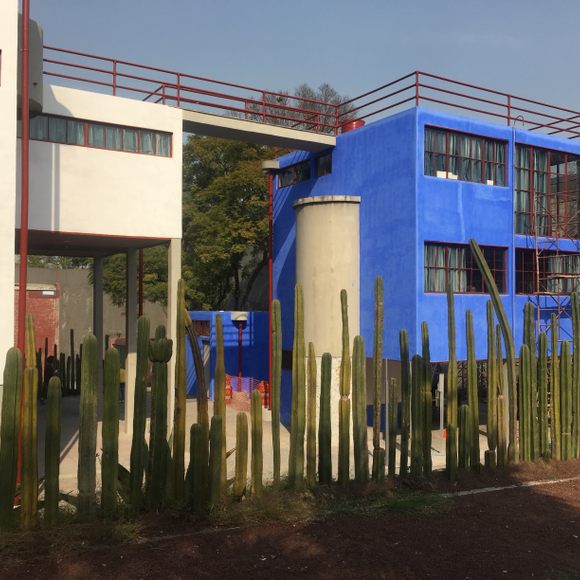
Frida did what every woman does when in the throws of romantic agony, and got a new haircut.
Here is a translation of an extract from a letter that Frida wrote to Diego in 1953 on the occasion of the amputation of her leg. ‘Im writing to let you know I’m releasing you, I’m amputating you. Be happy and never seek me again. I don’t want to hear from you, I don’t want you to hear from me. If there is anything I’d enjoy before I die, it’d be not having to see your fucking horrible bastard face wandering around my garden.‘Savage/iconic.
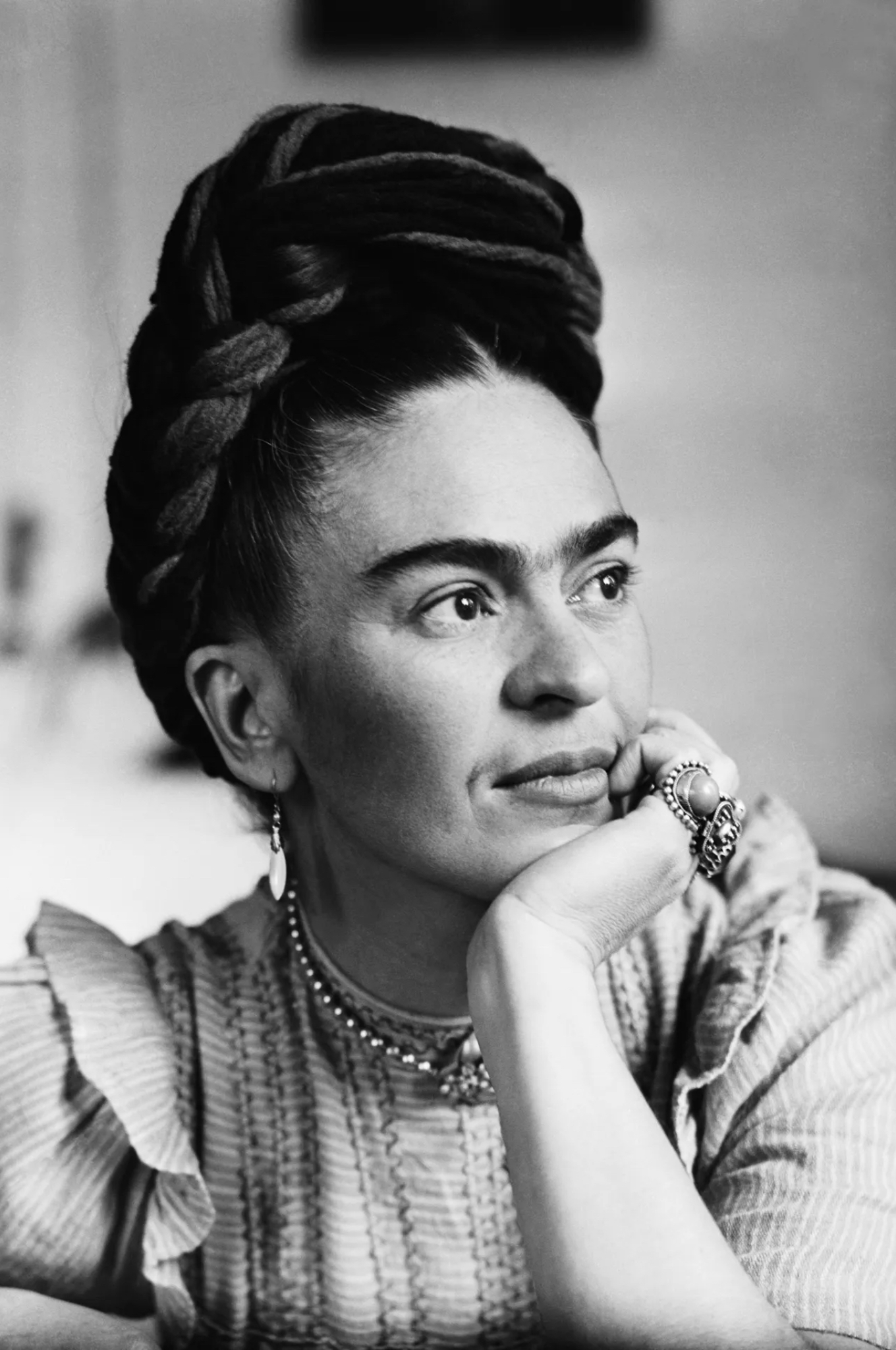
When Diego and Frida met she was a precocious student and he was the most famous artist in Mexico. Now, Frida outranks her husband in terms of infamy, in part due to the mythology she created with herself as the central figure. The traditional Tehuana dress, hair woven with fabrics and fresh flowers, pre-Columbian jewellery and that singular, snaking eyebrow were eccentricities that she cultivated consciously.
Her biographer, Hayden Herrera describes Frida’s work as ‘both a mask and a frame’, and I would argue that the same could be said for her image, intertwined as one is with the other. The enduring fascination with her image however threatens to belie the complexity of her art.
Yes, her face was her own favourite subject, but after all here was a woman who painted herself inside out. And her dozens of self portraits tell stories beyond just what happened to her and how she felt: stories of colonialism, of society and the human condition, and of the construction of identity.
It is a strange phenomenon that Frida’s work has become so tied up with capitalism and consumerism; the Rivera’s were resolutely socialist, each in their own right. She felt a close affinity with the Mexican revolution [so much so that she falsified her birth year to coincide with its date], was a communist party member by aged 16, had an affair with Leon Trotsky, and her body was laid in state under the communist flag when she died aged 47. Diego penned manifestos and worked Marxist themes into his murals [even one commissioned by the Rockefellers, who were so outraged at his depiction of Lenin on the walls of their temple to commerce that they fired Diego and tore down the wall].
The mass produced tat with low-resolution reproductions of her work would not, one suspects, have gone down too well with this highly politcal couple. The idolisation of their characters on the other hand, they would probs have been thrilled about. When I was studying for my degree at Saint Martins there was a girl who came to university every day dressed as Frida Kahlo.
Frida has been adopted as poster girl for marginalised folk the world over. When she wasn’t in her Tehuana costume she affected an androgynous, gender non-conforming [for the time] look of men’s tailoring or workman’s casuals.
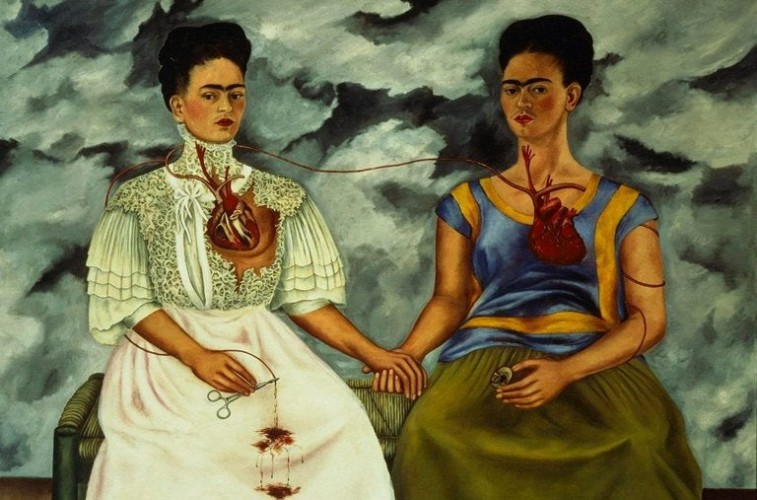
Mexico, D.F./Artists Rights Society (ARS), New York
Frida has been adopted as poster girl for marginalised folk the world over. When she wasn’t in her Tehuana costume she affected an androgynous, gender non-conforming [for the time] look of men’s tailoring or workman’s casuals. Although married to Diego from the age of 22, she was a bisexual who was known to have several same-sex relationships in her lifetime, and is remembered as a symbol of resilience amongst the LGBTQ+ community, those with disabilities, feminists, and Latin Americans.
Her legacy is all the more impressive given what she had to overcome––the things that happened to her––but it is the astounding intensity of her art for which she should most be treasured. John Berger attributes her enduring relatability thus: ‘… under the new world order, the sharing of pain is one of the essential preconditions for a refinding of dignity and hope.”’The pain which Frida painted wasn’t just her own, it was that of others, of unjust circumstances, the world order. Not just a philandering husband, but a suffering which is universally felt.
END
subscribe for the latest artist interviews,
historical heronies, or images that made me.
what are you in the mood for?





